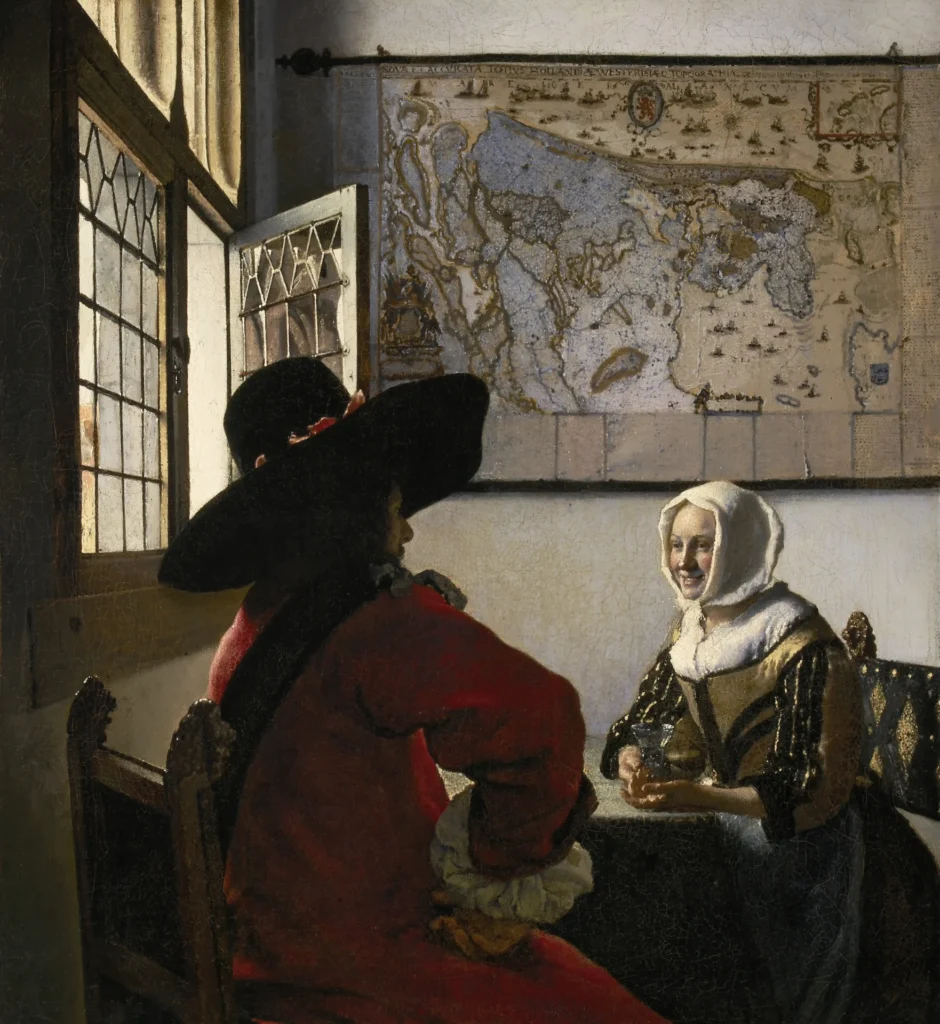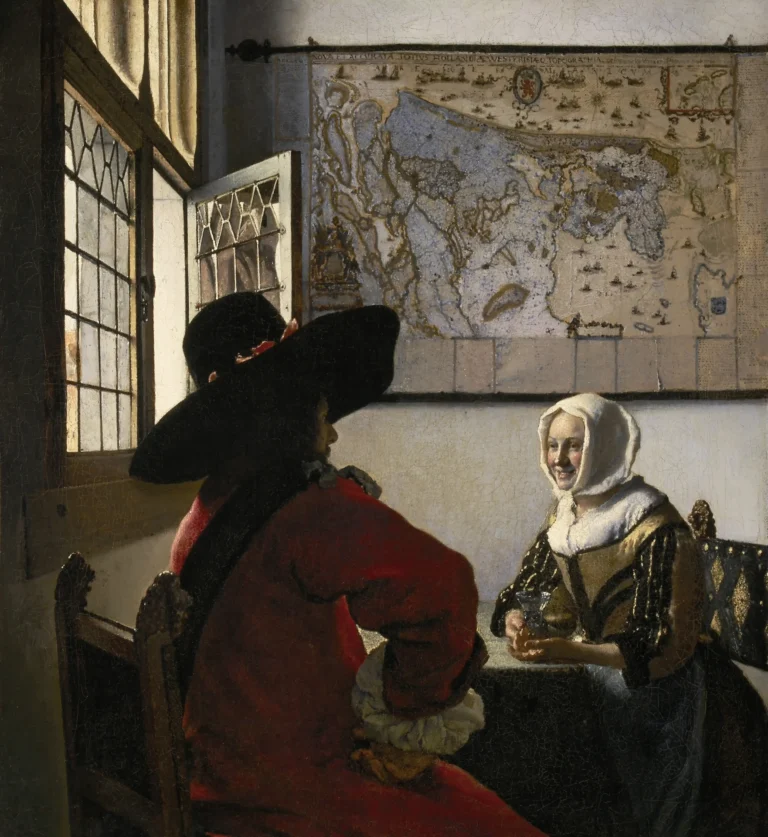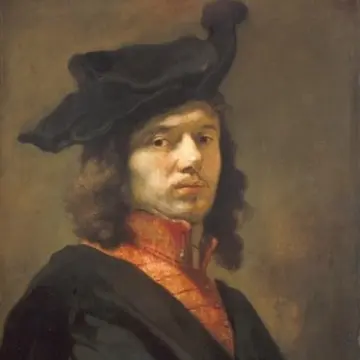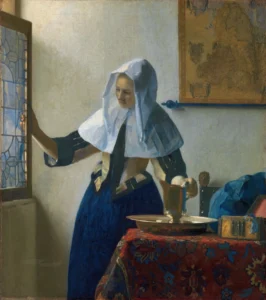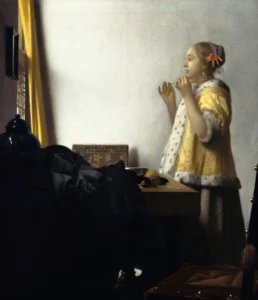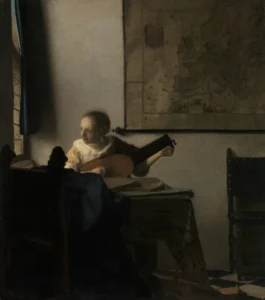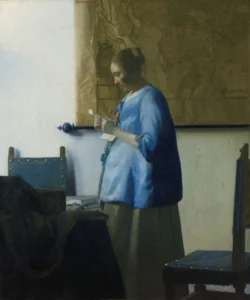Officer and Laughing Girl (1657)
Johannes Vermeer's Officer and Laughing Girl represents an intimate glance into 17th-century Dutch life, showcasing the delicate interaction between a young woman and an officer. The painting harmonizes intricate details; the luminous light plays upon the subjects, emphasizing their subtle expressions and surroundings. The meticulous use of vibrant color indicates Vermeer's deft handling of pigment and light, illustrating the luxuriousness of the era, and invites numerous interpretations of the underlying social dynamics.
Year 1657
About the Artwork
Did You Know
Liked what you see? Add it to your collection.
Enjoyed reading? Share it.
... continued
Composition and Setting
The painting depicts an intimate scene of a young woman, dressed in a yellow bodice and a blue apron, seated at a table opposite a young officer. The setting is likely a middle-class home, as indicated by the presence of a crystal wine glass and a map on the wall, which was a costly item and not typically found in taverns or lower-class settings.
Characters and Interaction
The woman, whose face is illuminated by soft, direct light from an open window, is believed by some to resemble Vermeer's wife, Catharina Bolnes. She holds a wine glass and appears to be engaged in conversation with the officer, whose face is silhouetted and not fully visible. The interaction between the two has been interpreted in various ways, with some seeing it as a scene of courtship within societal norms, while others have suggested more provocative interpretations, though these are often dismissed as being influenced by Victorian-era biases.
Artistic Techniques
Vermeer's mastery of light is a hallmark of this painting. The light streaming through the window illuminates the woman's face, her dress, and the gilded finial on her chair, creating a sense of depth and radiance. Vermeer achieved this effect by manipulating the thickness of his paint, using thin passages for shadows and thick dabs for highlights.
Use of Maps and Other Elements
The painting features a map of Holland and West Friesland, published in 1621 by Willem Blaeu and Balthasar Florisz van Berckenrode, which Vermeer used in several of his works. This map adds a layer of meaning, possibly alluding to the officer's duty to protect his homeland or his territorial aspirations.
Pigments and Technique
The painting was executed using a limited palette that included brown and red ochre, lead-tin yellow, natural ultramarine, azurite, and lead white. The pigment analysis reveals detailed layers and mixtures used to achieve the desired colors, such as the yellowish area in the window and the blue area of the map.
Provenance
The painting is part of The Frick Collection in New York and was purchased by Henry Clay Frick in 1911. It had once borne a forged signature of Pieter de Hooch, a contemporary of Vermeer's, but is now universally attributed to Vermeer.
Significance
Officer and Laughing Girl is considered one of Vermeer's first mature works, showcasing his masterful handling of light and space. It reflects his specialization in domestic interior scenes of middle-class life, a genre for which he is renowned.




